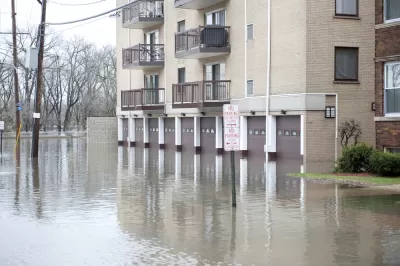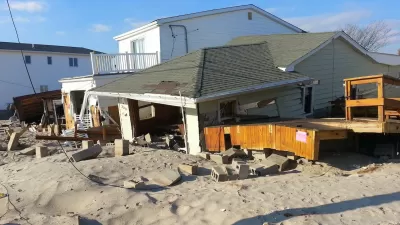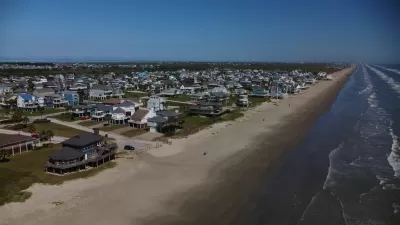The Federal Emergency Management Agency undercounts the humber of homes at substantial risk of flooding by some 70 percent, according to a report released this week.

Andrew Freedman, Brady Dennis, and Laris Karklis report on a report released Monday by the First Street Foundation, which finds that "there are at least 6 million households that are unaware they’re living in homes that have a 1 percent chance of flooding in each year — putting them within a '100-year' flood zone."
That total means there are nearly 70 percent more homes at substantial risk of flooding than included within the Special Flood Hazard Areas defined by the Federal Emergency Management Agency. Homes included in Special Flood Hazard Areas are eligible for the National Flood Insurance Program.
Moreover, the number of at-risk homes is expected to grow as the effects of climate change worsen in coming decades.
The nonprofit flood research and communications group First Street Foundation released the report to level the playing field between buyers and sellers, and democratize specialized flood risk analyses that insurance companies and consulting firms are producing but charge hefty sums to access, according to Freedman, Dennis, and Karklis. The report includes free flood risk maps down to the property level for 142 million properties in 48 states, and ranks cities by the percentage of properties at risk. Cape Coral, Florida leads the list, with 69 percent of its properties at risk in 2020—a figure expected to rise to 84 percent by 2050.
FULL STORY: Millions of homeowners face flood risks without realizing it, and climate change is making it worse

Alabama: Trump Terminates Settlements for Black Communities Harmed By Raw Sewage
Trump deemed the landmark civil rights agreement “illegal DEI and environmental justice policy.”

Planetizen Federal Action Tracker
A weekly monitor of how Trump’s orders and actions are impacting planners and planning in America.

Why Should We Subsidize Public Transportation?
Many public transit agencies face financial stress due to rising costs, declining fare revenue, and declining subsidies. Transit advocates must provide a strong business case for increasing public transit funding.

Understanding Road Diets
An explainer from Momentum highlights the advantages of reducing vehicle lanes in favor of more bike, transit, and pedestrian infrastructure.

New California Law Regulates Warehouse Pollution
A new law tightens building and emissions regulations for large distribution warehouses to mitigate air pollution and traffic in surrounding communities.

Phoenix Announces Opening Date for Light Rail Extension
The South Central extension will connect South Phoenix to downtown and other major hubs starting on June 7.
Urban Design for Planners 1: Software Tools
This six-course series explores essential urban design concepts using open source software and equips planners with the tools they need to participate fully in the urban design process.
Planning for Universal Design
Learn the tools for implementing Universal Design in planning regulations.
Caltrans
Smith Gee Studio
Institute for Housing and Urban Development Studies (IHS)
City of Grandview
Harvard GSD Executive Education
Toledo-Lucas County Plan Commissions
Salt Lake City
NYU Wagner Graduate School of Public Service





























